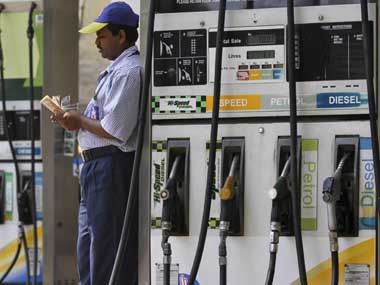Where would Indian banks be if it were not for the oil industry’s losses?
We’ll explain statement that a bit later, but first, let’s see what’s happening between borrowers and lenders in the banking system.
When the State Bank of India announced a sharp cut in deposit rates (it now has just two rates, 6.5 percent and 8.5 percent, for periods under a year and periods above), the justification its gave was that there’s weren’t enough borrowers for its money.
SBI Chairman Pratip Chaudhuri told CNBC-TV18: “Deposits have grown by something like Rs 75,000 crore (since April), without taking retail deposits. The loans have grown only by about Rs 18,000 crore….That’s why we thought we would slightly slow down our deposit mobilisation efforts…”.
Two points can be made.
First, this is yet another confirmation of the growth slowdown. As long as borrowers fight shy of banks, deposit rates could go down even further.
[caption id=“attachment_448034” align=“alignleft” width=“380”]
 Put another way, the oil companies’ woes are coming to bankers’ rescue in these times when loans are going abegging. Reuters[/caption]
Put another way, the oil companies’ woes are coming to bankers’ rescue in these times when loans are going abegging. Reuters[/caption]
Second, and this is the shocker, actual loan growth for banks may actually be zero or negative. Or even negative.
Here’s why.
The Reserve Bank’s weekly banking data shows that while deposit growth in the current financial year from 1 April was 6.3 percent, loan growth was just 2.4 percent - nearly four percent below deposit growth.
But was even this 2.4 percent loan growth healthy?
Absolutely not. Non-food credit - which is what companies borrow - actually fell compared to last year. In 2011-12, loans grew by Rs 1,01,100 crore between 1 April and the week to 10 August; in this financial year, the figure is down to 93,130 crore - a fall of nearly 8 percent compared to last year.
But even this figure is flattering. What is really holding up the figure is oil sector borrowing - which is the result of the government not paying up subsidies to the oil marketing companies (Indian Oil, BPCL and HPCL). They got zilch so far.
The net result is they all have to borrow big time to import crude oil for refining. As on 30 June 2012, the trio had borrowings in excess of Rs 1,57,617 crore, says Business Standard . That’s an increase of Rs 29,345 crore from the year before. It has only gotten worse since then, since oil prices have risen again.
Take this oil borrowing figure out, and the real growth in non-food credit would be negative.
Conclusions:
One, few companies are borrowing, if they can help it.
Two, the only ones borrowing are the ones who are forced to - the oil flock, for example.
Three, if the government paid oil companies their subsidies on time, even this growth would evaporate.
Put another way, the oil companies’ woes are coming to bankers’ rescue in these times when loans are going abegging.
)